Before making any decision on the kind of shoe to buy, determine the activity that you intend to use it for. Do you anticipate running in it? Is it for walking?
If you are undecided, then you are at a crossroads, deciding between running vs walking shoes.
Using the appropriate shoe is vital for maintaining correct body posture and natural body movement. It helps reduce the tension on the part that absorbs it the most.
Having the right shoe for a specific activity prevents minor foot pain and long-term injuries, as well. However, with the overwhelming number of shoes today, choosing the best pair could be challenging.
For that, you can rely on us.
We hope you love the products we recommend! We only have products that we thoroughly investigate and believe are of real value to you.
As an Amazon Associate, Sports Send earns from qualifying purchases and collects a share of sales or other compensation from the links on this page. It is at no extra cost to you
The Body Mechanics When Running or Walking
To have a better understanding of the differences in each footwear, let us look at the two activities and the demands they place on the foot and the shoe.

Running
Most animals land on the balls of their feet; humans are the exception. Only humans land on the heels of their feet while running.
This movement gives us longer virtual legs or leg extension that enables us to move faster than running on the balls of the feet.
Running puts uneven tension on the foot. The outer heel absorbs the most impact before distributing the body weight through the foot up to the toe.
As each stance puts either foot off the ground, running requires the support of two to three times our body weight.
The pendulum effect can explain this movement from the heel through the toe. The feet are the stationary pivot while the body swings up and over.
The human body looks like an inverted pendulum as it moves while running.
Walking
Walking, on the other hand, distributes body weight evenly. The pressure moves from the heel through the ball up to the toe.
This gentle motion necessitates the foot to absorb at least one to two times the body’s weight on each step.
Although it looks natural and simple, the body mechanics while walking are complex. Aside from the feet, the hips, arms, shoulders, spine, and head move across the ground, too.
It usually begins when the feet are positioned forward apart. The weight of the body is then transferred to the forward foot.
As the weight goes to the forward foot, the knee bends to absorb the tension. Then, the knee straightens out and lifts the body
At this point, the weight-bearing foot transfers the pressure to the ball of the foot.
Running vs Walking Shoes
At first glance, these two types of footwear seem very similar, which is why many people often use the wrong kind of shoe for a specific activity.
Sometimes, they wear shoes with less cushioning for running, while others walk in stiff shoes. This leads to muscle pain, blisters, and other foot pains.
Running vs walking shoes have different characteristics. This means that runners should not run in walking shoes because they are too stiff and don’t flex.
On the other hand, fitness walkers should not walk in running shoes because they are too light and have less cushioning.
Like they say, the right shoes can take you to places you never thought you could go.
Differences Between Running and Walking Shoes
To help you understand running and walking shoes better, we will list some of the top differences between the two, the different types they come in, and even the differences in their cost.
Cushioning
Running shoes tend to be cushioned very well, have good support and have a fit that is comfortable.
This is because runners need that extra support and cushion to protect them against the constant beating that occurs when they run.
Walking shoes will have lesser cushioning but can either have lesser support or, surprisingly, will have more support.
Flex
Other than the extra cushion, running shoes tend to have lesser flex. This is mostly near the ball of the foot. This is partly because of the added material that is used in the extra cushioning.
However, it is by design, too. A runner does not typically need as much flex as they would need in a walking shoe. The foot of a runner will go through a lesser motion range.
Soles
In addition, you will notice that the soles in a running shoe are flared outwards when you look downwards. All this also adds more cushioning along with protection to your shoe.
Ventilation
Lastly, since runners obviously work much harder than walkers, they generate higher levels of heat, which means that the shoes need to be more breathable.
As such, they have thinner uppers made of mesh, which allow air to flow through the shoes.
Style
When it comes to style, walking shoes will mostly have subtle colors, such as white or black. Running shoes, on the other hand, will have bright colors with vibrant patterns.
Walking shoes will have a good amount of cushion but lesser than running shoes. The soles will mostly have no flare, and the ball of the foot will have more flex.
Certain walking shoes will typically be made out of a breathable mesh similar to running shoes. However, on some models, you will also find uppers with synthetic leather.
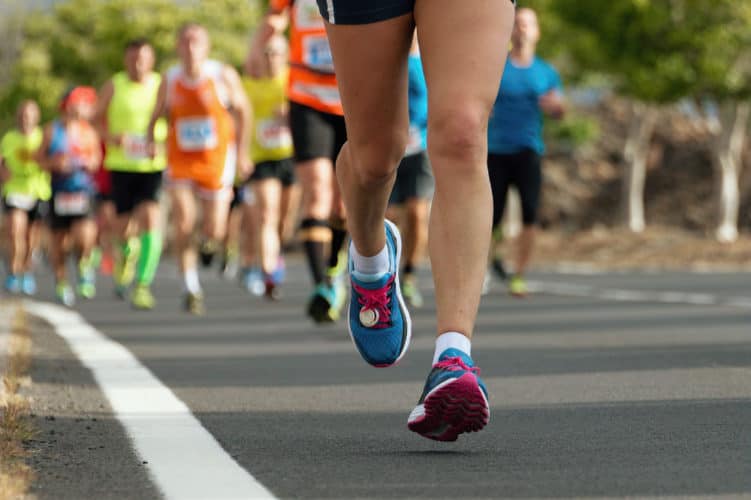
Types of Running and Walking Shoes
All of us are different and unique, so it’s no surprise that even our feet differ from each other. Some shoemakers have adapted to this idea and made different kinds of shoes for different feet types.
When walking or running, you are landing on the outside of the heel, and the foot will roll inwards towards the big toe. This is known as pronation.
If the foot excessively rolls in, it is known as overpronation. If the foot rolls on the foot’s outer part, then it is called supination.
As a runner, it is essential that you wear the right shoe that matches your foot structure. If you run in a shoe that isn’t right for you, it could be uncomfortable and may cause injury.
Since there is a lesser force that is placed on your legs and feet when you walk, walking in an inappropriate type of shoe will definitely not be comfortable, but it will also not lead to serious injuries.
For a Runner
For a runner, the running shoe will most likely be placed in the following categories:
Neutral
These types of shoes are made for runners who don’t overpronate. There aren’t any features that are built into it that add more stability. These are also perfect for runners who supinate or pronate.
Guidance
These types of shoes are for people who tend to overpronate a bit. These shoes will slightly correct the foot to a neutral position as you run.
Stability
These types of shoes are for people who overpronate. The inside arch comes with a stiff piece of foam that will help the runner prevent their foot from rolling towards the inside excessively.
Motion Control
These types of shoes are made to be stiff and to keep the foot aligned in a neutral position. These shoes are relatively heavier but offer good support from the toe to the heel.
This shoe is great for runners who tend to overpronate heavily.
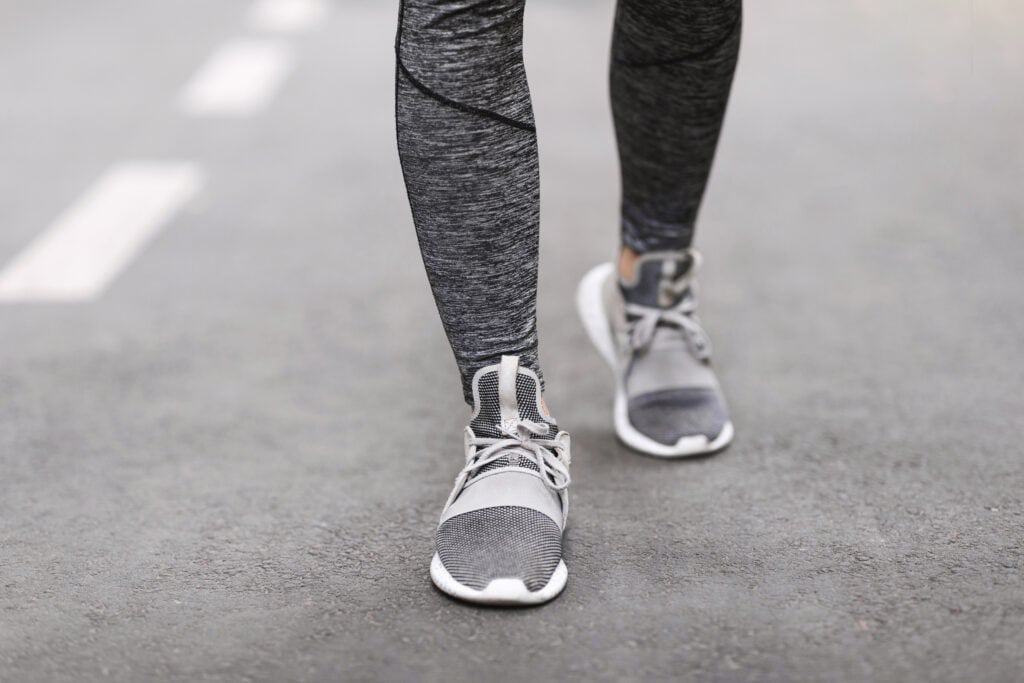
For a Walker
For a walker, walking shoes will be categorized similarly but will be less nuanced than running shoes.
Neutral
Similar to running shoes, these shoes will allow the walker to a natural walking stride and will not come with any components that will correct the stride.
Stability
These shoes are created for walkers who overpronate, just like running shoes.
Motion Control
These types of shoes tend to be stiff and are made to keep your foot in the right position. These shoes also tend to be heavy but allow for a nice head-to-toe roll while you walk.
Walking shoes are available in lesser types of pronation control. This is mainly because the element of injury is much lesser when you walk rather than when you run.
Cost Differences Between Running and Walking Shoes
There is quite a bit of design and research that goes into running shoes. This is partly due to the fact that running puts a lot of force on our bodies.
As such, brands that make running shoes are continuously trying to manufacture the lightest, most protective, and most durable shoes they possibly can outdo each other.
While there is indeed a ton of research and development that goes into these shoes, the construction of it also makes it expensive. Walking shoes, typically speaking, will offer more value for their money.
With that said, it’s important to remember that with most shoes, you will get what you’re paying for.
An inexpensive pair of running shoes will not feel as comfortable nor will it last as long as an expensive pair of running shoes.
Features for Specific Body Mechanics
Now that you have a clearer understanding of the body mechanics while walking and running, we go forward to the qualities of each type of shoe.
We will look into the shoe characteristics and features that are more appropriate for particular sets of body mechanics.
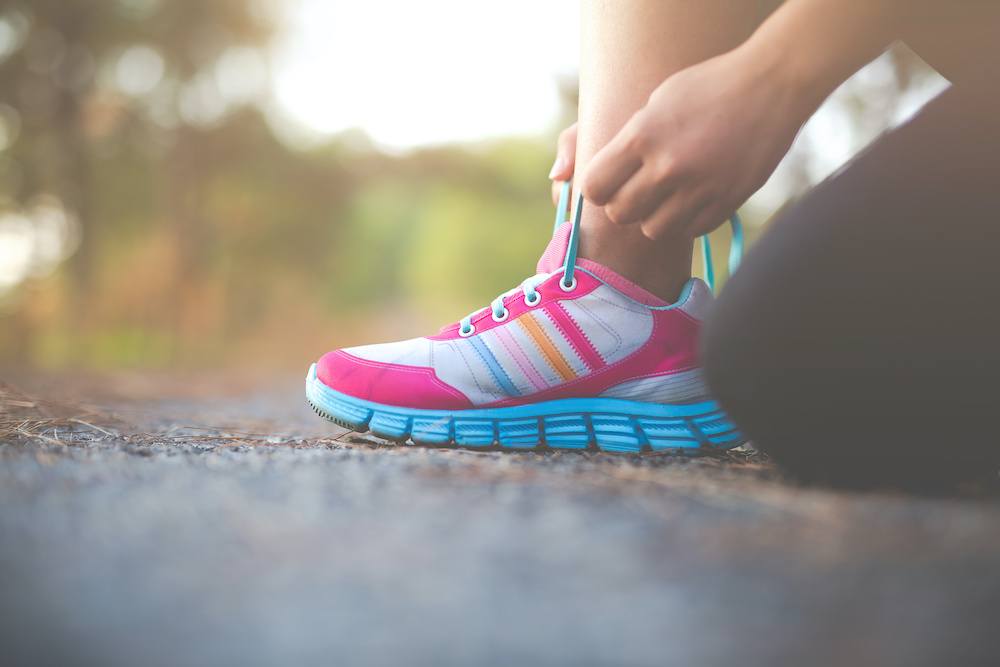
Cushioning
Runners experience an impact three times their body weight, while fitness walkers get only 1.5 times. Therefore, runners need extra cushioning in the heel and front foot than walkers do.
More cushioning is also required when you intend to run more than six miles at a time.
Walkers need little cushioning, just enough so that the legs and feet don’t feel battered from the tension on the ground. Cushioning adds more weight, which is not suitable for a walking shoe.
Less cushioning and weight enables the walkers to run or walk faster.
Flexibility
Both walking shoes and running shoes should be flexible. One of their differences is where flexibility is incorporated. Most running shoes are flexible on the midfoot or arch.
Some flex most at the front foot. The placement of flexibility in running shoes depends on the wearer’s pronation.
On the other hand, walking shoes flex at the front foot because fitness walkers push off with their toes. Unfortunately, many shoes marketed as fitness walking shoes don’t bend at all.
Some of them flex at the arch, which doesn’t lay out the platform needed for walking.
Heel Height
The proper heel height varies according to the individual runner. Runners may strike the ground first on the midfoot, the front part of their heel, or the ball of their foot.
This body mechanic is called the heel-to-toe drop, which can be addressed by the heel height of a shoe.
Fitness walkers need shoes that have the minimum difference in height from the heel through the toe. It is the so-called heel drop that comes in millimeters.
Fitness walking shoes should have a heel drop of less than eight mm, preferably four mm or less.
Heel Flare
Fitness walkers do not need heel flare because they strike the surface with their heels. Otherwise, it will only hinder the motion of rolling forward through a step, causing foot pain and leg muscle aches.
Ideally, a walking shoe should have an undercut heel.
On the other hand, running shoes need a flared heel for added stability. It is especially true for runners who strike the ground first on their front foot or midfoot.
The flared heel design is often seen in trail running shoes.
The Lifespan of Each Type of Shoe
Both walking shoes and running shoes tend to have different lifespans. Let’s briefly discuss each of them.
Running Shoes
Running shoes witness the most amount of wear and tear since you exert much more energy while wearing them.
In most cases, a running shoe is great to last only between 350 and 500 miles of running.
With that said, make sure you are examining your running shoes thoroughly. Its outsole should not be worn out nor should the heel counter be out or tilted.
Walking Shoes
Walking shoes tend to last much longer, but it also depends on how often you use them. Ideally, they can last anywhere between six months to a year.
In terms of the miles, if you are walking around five miles a day, your walking shoes can easily last around 1,200 to 1,500 miles of walking.
Conclusion
Understanding how your body moves while you walk or run helps you identify the appropriate shoes for you. What do we mean by this? It is quite simple, actually.
Does your midfoot strike the ground first? Then it would help if you had extra stability running shoes. Do you walk long distances at a time?
If yes, it would be best if you had more flexibility in your fitness walking shoes.
The information contained in this article empowers you over the hundreds of shoes in the market.
You will no longer be misinformed by marketing campaigns that present the best shoes for your particular fitness needs.
Whether it’s a running shoe or a walking shoe, remember that it should fit well and support the natural motions of your foot as it pushes you forward.

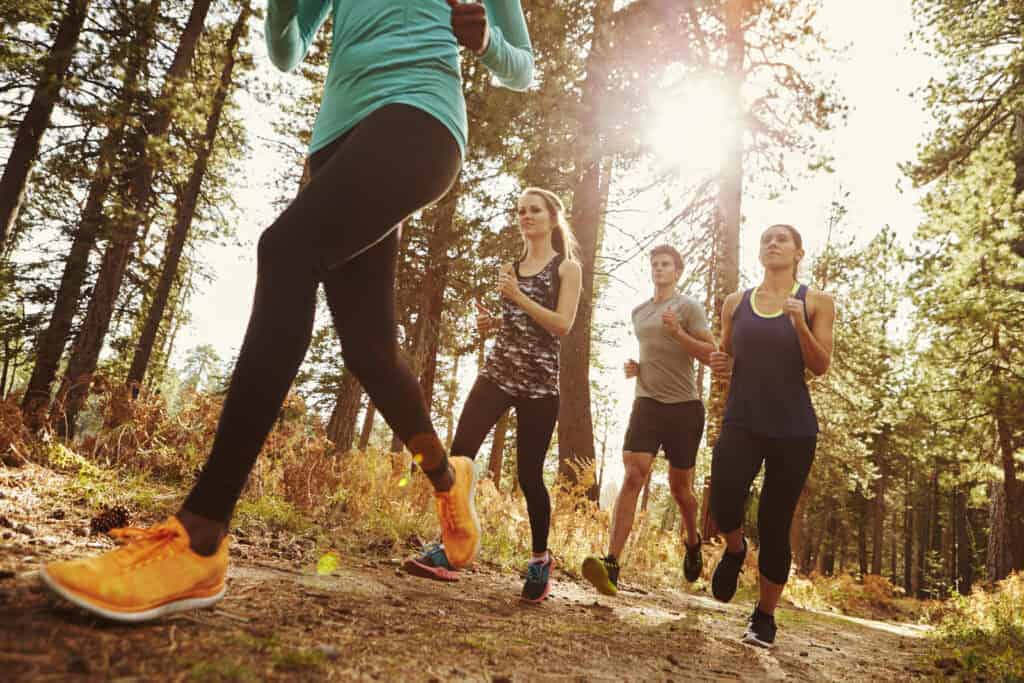
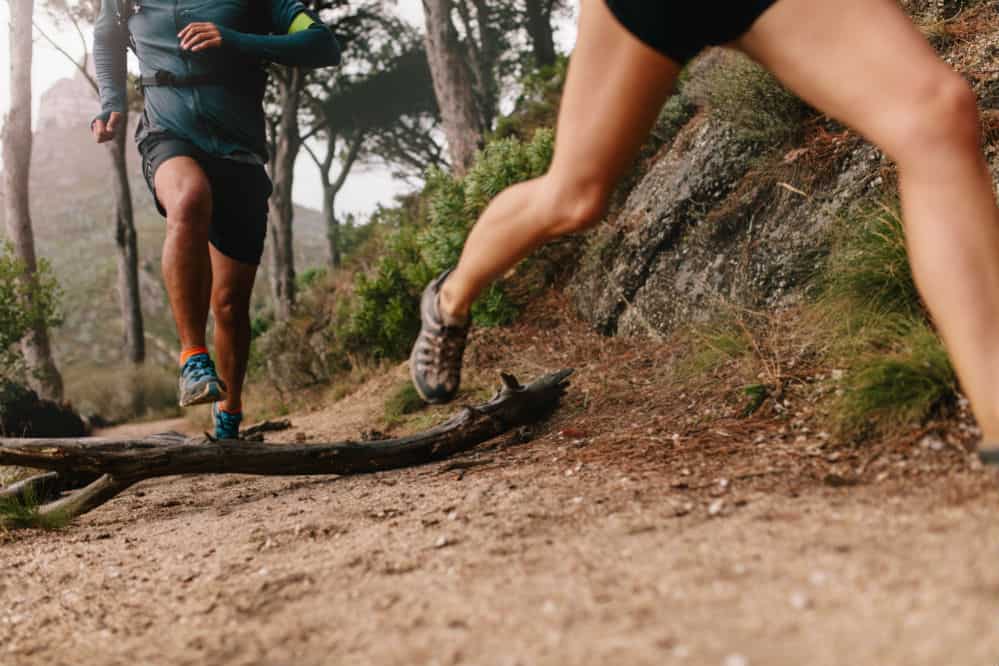
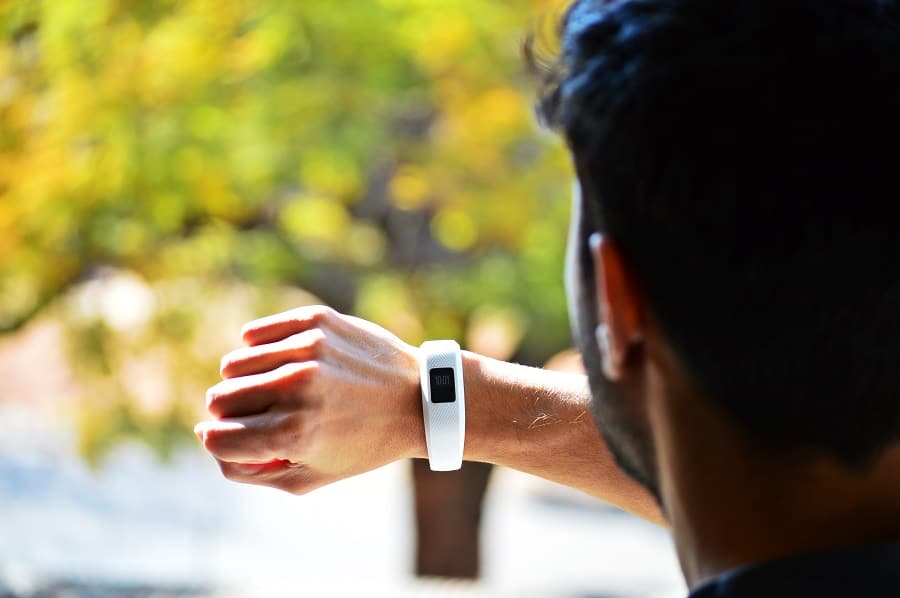
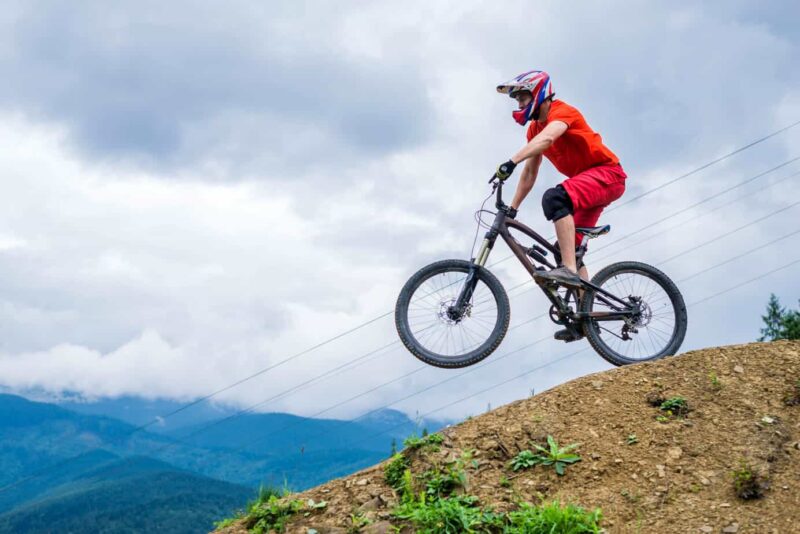

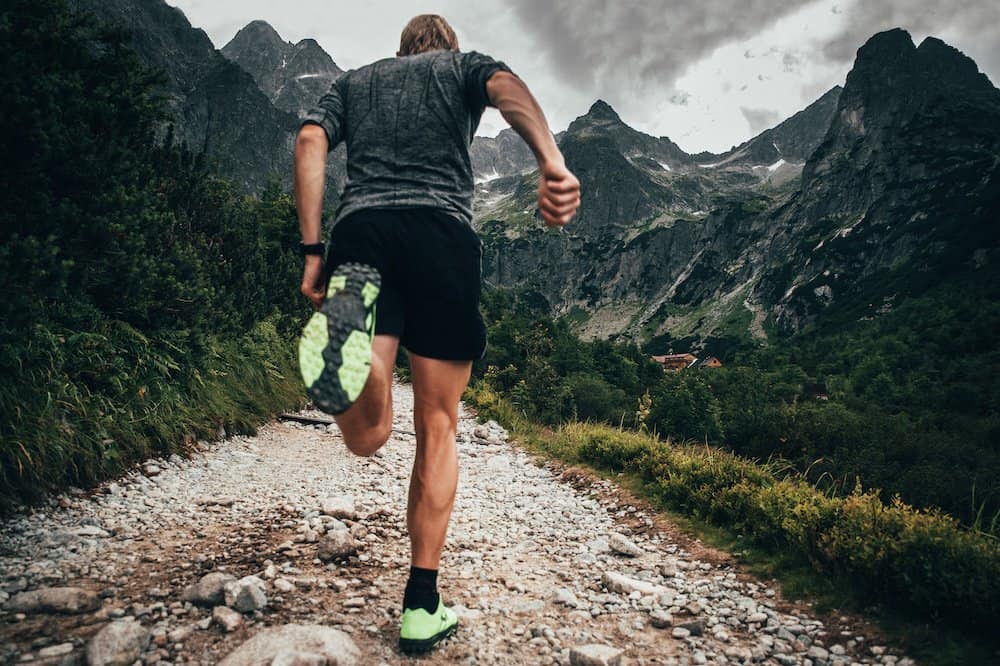
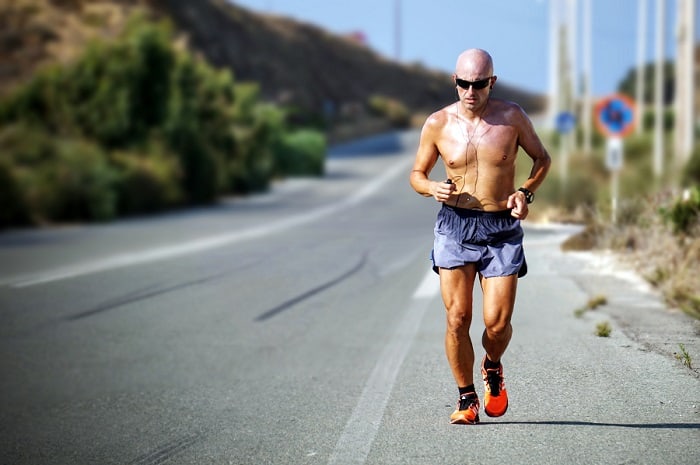

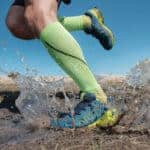


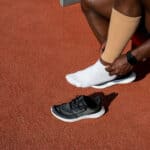

I think that no matter which type or fitting of shoe you get I think that it needs great cushioning and maybe even consider putting a gel or pad insert into your shoe so that your feet stay in shape. When I put an insert in my shoe I started enjoying my runs/walks more. Which type of shoe do you use and do you run or walk more?
Hello, Jon and thank you.
There are some crucial factors to have in mind when you buy shoes. I can name factors like upper, Ankle Collar, Heel Counter, outsole and midsole, toe box and Heel Cushioning to name few.
All of these are very important for your performance, enjoying and even health because shoes today are made with your body in mind. How they can let you feel better, if you have this or that problem you need to have this and that in the shoes. I wrote an article about it which you can see here.
Through the time I have both run and walked. I believe it is good for your body to change something and both methods are excellent for you. But most of the time I have used trail running shoes.
If I can help you with anything else, or if you have any questions, don´t hesitate to contact me.
Hello.
I made my service in the army for 9 months and they taught heel-to-toe drop, but I never really mastered it. It is a matter of putting the whole process in the subconscious so it becomes automatic.
But it certainly helps to make less effort and more progress in your running.
If someone is running 3-4 days a week (about 5-7 miles), how much time is recommended before making a change?
Well, I ask this because like the toothbrush which doctors suggest you change every 3-6 months, maybe there is a recommended usage for the shoes too. (9 months in the army doesn’t qualify me to be an expert so I ask out of curiosity).
Thanks for this informative article. Had fun reading it. Take care
Hello, George and thank you.
Thank you for your kind words.
The heel to toe method has been used a lot in sports, for example in athletics and soccer. You get more speed with less energy and use the body as well as possible.
There are some factors which affect when you should change the running shoes. Like where you run etc. The thumb rule is 300 to 500 miles. But it is not good to use old shoes even so you have not used it much as it has an effect on the material in it. But I can admit that I use my shoes a little bit longer than this miles, not much longer but longer.
If I can help you with anything else, or if you have any questions, don´t hesitate to contact me.
Hello; Does the running shoes come with any form of spikes? The truth I had not notice the difference in running versus walking shoes, it is good that I come upon your post that teaches me that there is a difference, with walking shoes and the running shoes.
I always take my teenagers to store the choose what they want I pay the bill. Do continue to give us information.
DorcasW
Hello, DorcasW, and thank you.
Thank you for your kind words.
Great to hear about your benefit of reading the article too.
If I can help you with anything else, or if you have any questions, don´t hesitate to contact me.
I’m definitely big on cushioning when it comes to running, or even being on my feet for a long time. I don’t think we realize how much of an impact we put on our bodies when it comes to running versus walking or even fitness walking. Three times is twice as much impact as we put on our bodies with fitness walking, and that’s a huge difference. For this, would it be wise to change running shoes more often than walking?
Hello, Todd Matthews, and thank you.
Thank you for your kind words.
Yes, it is a lot of impacts of the bodies with exercises and shoes play a significant role to defend and protect the legs. It is wise to change running shoes every six months or 3-500 miles. But in most cases, you can use walking shoes longer.
Of course this a rule of thumb but even so right to have in mind.
Don´t hesitate to contact me if I can help you with anything else, or if you have any questions.
Okay! Now, this is serious. I never knew there is a difference between a running shoe and a walking shoe. Well, both look alike, and I actually make use of my running shoe for walking too. It feels good to learn about this, though. I think irrespective of the differences, to ease the movement in use, and there’s a need for a pad that can help balance the feet in the shoe. Thanks
Hello, RoDarrick, and thank you.
Thank you for your kind words.
Great to hear about your benefit of the article too.
Don´t hesitate to contact me if I can help you with anything else, or if you have any questions.
Wow, didnt know there was a difference between the running and walking shoes. I didn’t also know that there was a lot to look into when one decides to buy any of them. I love running and I think I need to buy a new pair of beautiful looking boots. Do you think that I can go for walking boots when it comes to hiking seeing that there is more walking involved than running?
Hello, Henderson, and thank you.
Thank you for your kind words.
No, I would recommend that you use hiking boots if you are in hiking — a lot of things there, which is better for your legs and safety.
Great to hear about your benefit of the article too.
Don´t hesitate to contact me if I can help you with anything else, or if you have any questions.
Now I understand. I wish I had the insight of this article some years ago. I was a ‘naive’ runner, coming into the practice as a ‘release.’ I started on a running machine at home and then ventured outdoors. Throughout all of this, I was just using an old pair of ‘trainers’ or ‘sneakers’ which probably had no business being on my feet while running.
As you might guess, it ended in tears. I developed ‘Plantar Fasciitis’ and was laid up for several months. Towards the end of this time, I could hold back no longer and tried ‘barefoot’ running. Needless to say, I was asking too much too soon on my poor feet. Snapped ligaments ensued and my running days were over.
Had I had the opportunity to read your article back then, things would have turned out differently. As you so rightly say, it’s not just about the shoe, it’s about finding the right one for what you need it. Understanding body mechanics is also key in appreciating how the choices we make are so important. It is a must-read for anyone starting out running.
Hello, Twack Romero, and thank you.
Thank you for your kind words.
Sad to hear your story. But good to see that you keep going.
Great to hear about your benefit of the article too.
Don´t hesitate to contact me if I can help you with anything else, or if you have any questions.
Hey, Thank you for writing on Running vs. Walking Shoes: Body Mechanics and the Right Shoes. I enjoyed it while reading your post and learn a lot from it. Before buying shoes, we must know the purpose of our shoes. We are going to use them while walking or running. Now I understand the Differences Between Running and Walking Shoes. Thank you for helping me to choose the best one for running. Earlier I use the same for both. Now feel comfortable.
Parveen
Hello, Parveen, and thank you.
Thank you for your kind words.
Great to hear about your benefit of the article too. Good luck.
Don´t hesitate to contact me if I can help you with anything else or if you have any questions.
Hello, thank you for this informative post. The time is amazing. I’m just looking for the shoes because my knee is pain. When I walk for a long time, my whole leg will be extremely tired and pain. I don’t know why. I think one of the most important issues is my shoes. When I go to see the doctor, they say my leg has no problem; that’s frustrating me a lot.
Your post teaches me a lot. I know more about the differences between running and walking shoes now. Buying news shoes seem to be the only way I can do. But I have one question. Is it possible to reduce my leg pain if I buy the right shoes?
It helps reduce the tension on the part that absorbs it the most.
Hello, CT, and thank you.
Thank you for your kind words.
Great to hear about your benefit of the article too.
About your question because of the leg pain. I always recommended talking with the doctor or physiotherapist as they know precisely your pain. But yes, it can help! Because it helps to reduce the tension on the part that absorbs it the most.
Don´t hesitate to contact me if I can help you with anything else or if you have any questions.